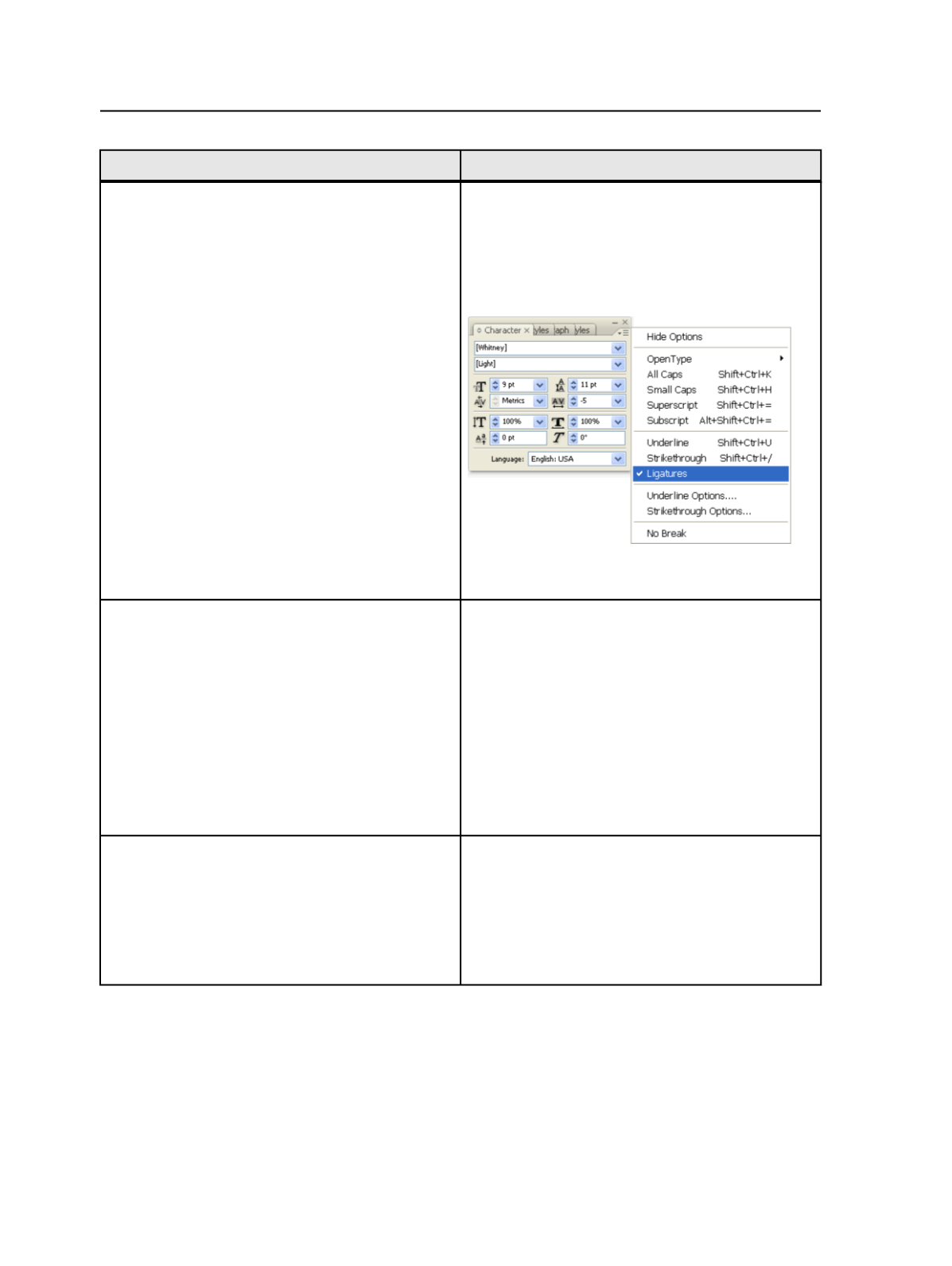
Complete these steps, in this order
More information
Check for any auto-substitution of ligatures (letter
pairs like ff, fi, tt) in your variable marks and change
them back to an actual two-letter pair. This may occur
in the QuarkXPress or InDesign software.
If the auto-substitution of ligatures is not changed
back to an actual two-letter pair, the name of the mark
will not be correctly interpreted, and the correct
variable data will not appear in the output.
The ligature controls for InDesign can be found in the
Character
panel.
To replace ligatures with separate characters, select all
of your type, and ensure that
Ligatures
is not selected.
Select the color of the text of your mark, based on the
separation on which you want the information to
appear.
Issues to consider:
●
Registration color will place the mark on every
plate.
●
For the best legibility (no registration issues), bar
code marks might best be restricted to black only.
●
Variable marks that can report
different
information
from each separation are
automatically
converted
to registration color when the mark is processed,
regardless of how they are colored in the original
PDF file. These include
$[color]
,
$[angle]
,
$
[calcurve]
, and so on.
From InDesign, select
File
>
Export
to export to a PDF
file. From Illustrator, select
File
>
Save As
to send to a
PDF file.
To fully embed fonts (if full embedding is permitted),
in the Export Adobe PDF dialog box, select
Advanced
,
and type
0
in the
Subset fonts when percent of
characters used is less than
box.
Printing to PostScript is not recommended because it
is less reliable for fully embedding fonts. You must also
distill it before it can be checked for a completely
embedded font.
592
Chapter 12—Outputs


